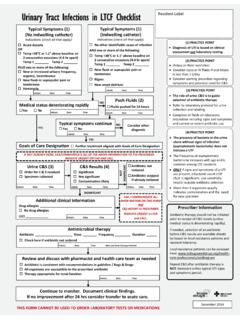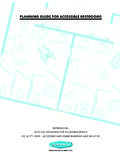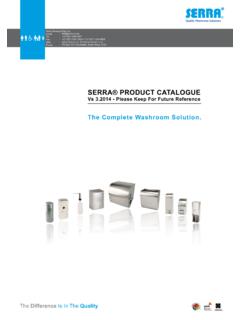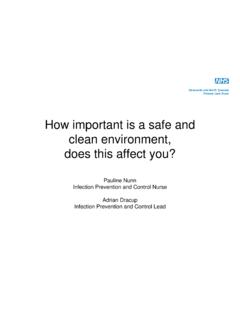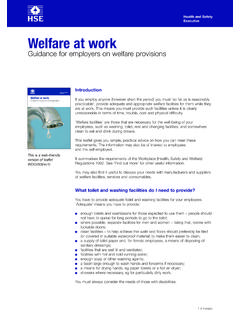Transcription of WASH YOUR HANDS - Do Bugs Need Drugs?
1 wash your . HANDS . KINDERGARTEN. Lesson Plan Kindergarten October 2009. GRADE. Handprints Suggested Time: 50 minutes K. Overview Students will learn that handwashing keeps them healthy and the important times to wash their HANDS . The steps of handwashing are taught first by watching the handwashing video and then by practicing handwashing with adult guidance. Flash cards are used to teach how and when to wash HANDS . Additional activities include making a handprint mural for the classroom, a worksheet, and a coloring page. Note: If time is an issue, this unit can be divided into shorter sessions. Curriculum Hygiene and Health Care Habits Students will identify and use positive hygiene and health care habits; , handwashing, dental care, wearing appropriate clothing for prevailing conditions. Learning Outcomes Students will learn: Handwashing keeps you healthy When to wash your HANDS Six steps of good handwashing Lesson Plan Material Checklist Handwashing Keeps You 5 Material Downloads Healthy minutes Picture of Bugsy When to wash HANDS flash cards 5 Steps of Handwashing flash cards When to wash your HANDS minutes Handwashing Video How to wash your HANDS 15 Handprint Mural instruction sheet Handwashing Video minutes Handwashing with an Adult instruction sheet Handprint Mural How to wash your HANDS poster Twinkle, Twinkle song poster Handwashing Practice with Handwashing activity sheet and Bugsy an Adult coloring sheet (one for each child).
2 25 Teacher Supplied Material minutes For Handprint Mural: finger paints, spoons, paint mixing trays, brushes and Classroom Activity Page and large sheet of sturdy paper Coloring Sheet For the Activity Sheet: crayons, scissors, glue Washrooms with soap and paper towels Kindergarten October 2009 -2- Teacher Information Eighty percent of common infections can be spread by the HANDS . HANDS can pick up germs from other people or from objects that are touched by others, such as door knobs, light switches and even teachers' desks. When the HANDS come in contact with the nose, mouth or eyes, germs can enter the body to cause illness. The HANDS are the middle-man in the chain of transfer of germs from the environment to the body. That is why handwashing is so important. Handwashing is the best way to stop the spread of infections.
3 Children need to learn the steps of proper handwashing because poor handwashing technique does not remove germs. The steps of handwashing are: 1. Wet your HANDS . 2. Apply soap. 3. Rub your HANDS together for 20 seconds or the time it takes to sing Twinkle, Twinkle. Rub all parts of your HANDS including palms, between your fingers, backs of HANDS , thumbs, wrists, fingertips and nails. 4. Rinse your HANDS . 5. Dry your HANDS with a disposable towel. 6. Use the towel to turn off the taps and let yourself out the washroom door. Don't forget to leave the washroom neat and tidy. Children also need to know the most important times to wash their HANDS so handwashing becomes routine. These include: before eating or preparing food, after using the toilet, after playing outside, after blowing your nose, after touching animals or pets and after handling garbage.
4 In addition to handwashing, other strategies for preventing the spread of illness in the classroom can be encouraged. To avoid getting germs on their HANDS and in the air, teach children to cough and sneeze in their sleeve. Encourage children to keep their HANDS away from their face because this will prevent germs from coming in contact with the nose, mouth or eyes. What about soap and alcohol-based hand sanitizers? Use plain soap. Plain soap is just as effective as antibacterial soap in preventing illness and does not have the negative medical side effect of promoting resistance to antibiotics. Alcohol-based hand sanitizers kill germs on the HANDS , but do not work if the HANDS are greasy or dirty. Hand sanitizers are ideal if soap and water are not readily available, but since children's HANDS are often soiled, handwashing is particularly important for this age group.
5 Handwashing with plain soap and water is a very effective way to prevent illness. When students and teachers wash their HANDS properly and frequently, the number of germs spread throughout the classroom can be significantly reduced. Kindergarten October 2009 -3- Lesson Introduce Bugsy Materials: Picture of Bugsy Introduce Bugsy to the class and explain that Bugsy is here to help them learn about handwashing. Bugsy will have important messages as we go along. As you can see, handwashing is really important for Bugsy because he has lots of HANDS ! How many HANDS does Bugsy have? Note: Graphic can be downloaded in print or overhead format or viewed on line from a projector or SMART board. Handwashing Keeps You Healthy (5 minutes). Explain to students that today they will be learning about germs and where germs can be found.
6 They will also be learning about ways to stop the spread of germs and talking about other things they can do to stay healthy. Do you know what germs are? Can you see them? Sum up: Germs are tiny living things that can make you sick. Germs are so small that they can't be seen, except under a microscope. (Illustrate by pinching your thumb and forefinger together.). How do you think germs are spread? Sum up: Coughing and sneezing are two examples, but the most common way that germs are spread is by the HANDS . What do you think happens if you touch a doorknob that has germs on it? Sum up: The germs come off on your HANDS . Then what happens if I shake your hand? Sum up: You will get germs too. Can you name some infections/diseases that are caused by germs? Sum up: Colds, influenza, sore throats, ear infections, stomach flu , and pneumonia are some of the illnesses that are caused by germs.
7 Who has had any of these illnesses? How did you feel? Sum up: Infections make you feel miserable. Sometimes you have a runny nose, cough, fever or headache. Sometimes you throw up or feel tired or achy. Kindergarten October 2009 -4- What are some of the things you can do to stay healthy? Prompt with the following: Brushing your teeth gets rid of germs that can cause cavities. Eating healthy foods keeps your body strong so germs can't get in. Daily activity keeps your body fit and prevents illness. Washing your HANDS removes germs on your HANDS that can make you sick or that you can spread to someone else. BUGSY SAYS HANDWASHING KEEPS YOU HEALTHY! When to wash your HANDS (5 minutes). Materials: When to wash HANDS flash cards. Cards can be laminated if desired. Alternatively, images can be downloaded as overheads or viewed on-line from a projector or SMART board.
8 Explain that handwashing washes away germs from the HANDS . Lead the students in a discussion of when they think it is important to wash their HANDS . Ask students to think of times when they might have germs on their HANDS that could get into their body to make them sick. Show flash cards to students and encourage them to come up with additional answers. Flash cards show the most important times to wash your HANDS : Before eating or touching food After blowing your nose After using the toilet After touching animals/pets After playing outside After handling garbage Explain that it is important to wash your HANDS before eating or preparing food because this is a time when germs from their HANDS could get on the food that goes into their mouth. HANDS should also be washed after any activities when germs can get on your HANDS such as after using the toilet, after playing outside, after blowing your nose, after touching animals or pets and after handling garbage.
9 Handwashing keeps you healthy. Handwashing gets rid of germs that can make you sick or that you might spread to other people. BUGSY SAYS REMEMBER WHEN TO wash your HANDS ! Kindergarten October 2009 -5- How to wash your HANDS and the Handwashing Video (15 minutes). Materials: Handwashing Video or DVD on request Steps of Handwashing flash cards Inform students that they are now going to see a handwashing video showing the proper way to wash their HANDS . Tell them that you are going to ask questions about what they saw, so it's important to watch carefully. After playing the video once, ask students if they can remember the steps of handwashing. They are: 1. Wet your HANDS . 2. Apply soap. 3. Rub your HANDS together. 4. Rinse your HANDS . 5. Dry your HANDS with a paper towel. 6. Use the towel to turn off the tap and let yourself out the door.
10 Last, don't forget to leave the washroom neat and tidy! To review, imitate the six handwashing steps from the video and ask the students to join in. Show the Steps of Handwashing flash cards. Ask students to help you get them in the right order. Post the flash cards in the classroom. Explain that along with the proper steps of handwashing the length of time spent rubbing their HANDS with soap is also important. It takes 20 seconds of rubbing the HANDS together with soap to get rid of germs. Ask students what they remember from the video about how to rub their HANDS together. What parts of the HANDS need to be scrubbed? Show the video again if it helps. Prompt the students to name: Palms Between the fingers Backs of HANDS Thumbs Wrists Fingertips and nails. Using the Twinkle, Twinkle song as a 20 second timer, ask students to imitate rubbing their HANDS together with soap while singing the song.
